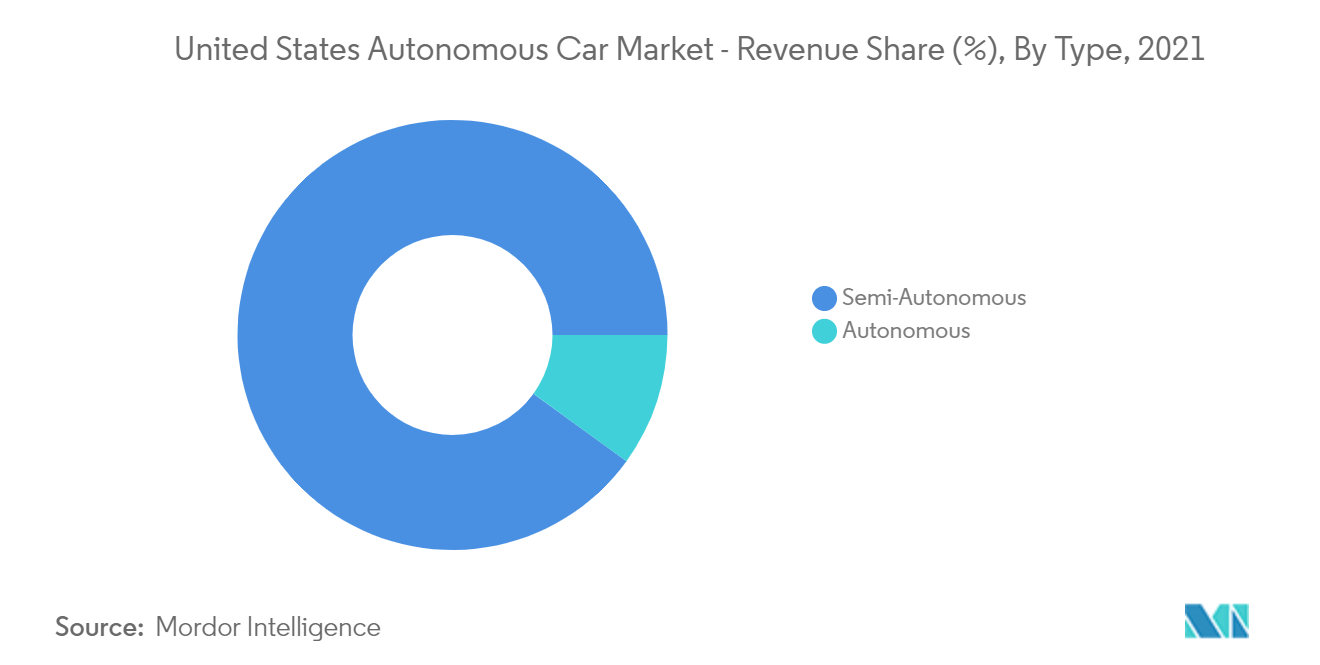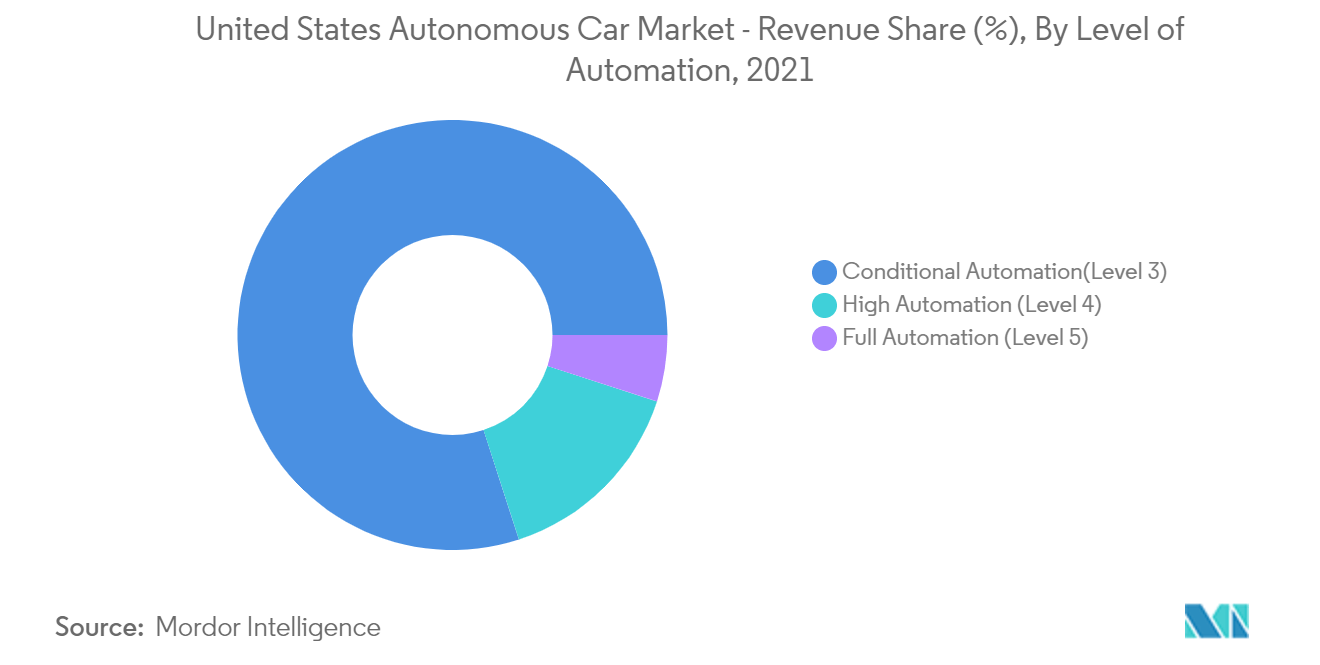Market Trends of US Autonomous Car Industry
This section covers the major market trends shaping the US Autonomous Car Market according to our research experts:
Growing Adoption of Autonomous Cars to Drive Demand in the Market
The United States autonomous car market will be dominated by the semi-autonomous vehicle, as the need for ease in driving and the increasing concern for safety and security are surging the demand for high-end technology.
The contributing factors in the market growth are the need for safe and efficient driving options, evolution in the connected car technology, increasing research and development in the autonomous car sector, and government support for these cars in terms of policies and rebates.
According to the NHTSA (National Highway Traffic Safety Administration), about 94% of the accidents occurring on US roadways can be attributed to human errors, like drunken driving and speeding. These can be mitigated with an autonomous car, whose functionality may follow the speed regulations stated in particular areas.
The market is expected to witness growth due to the rapid digitization of connected cars, which adds to their demand. The two necessary components of vehicle autonomy - vehicle-to-vehicle and vehicle-to-infrastructure connectivity - can be more easily integrated into connected cars than conventional ones.
OEM competitive rivalry has led to significant developments in this technology to cater to the ever-increasing demand from the public. For instance, Tesla, over a few months in 2021, has released a Fully Self Driving (FSD) update over the air to a majority of its vehicle owners, leading to a kickstart of using fully autonomous vehicles.
Various startups working in the level 4 cars are getting new funding to accelerate their operation. For instance,
In May 2021, We Ride, a level 4 autonomous driving mobility startup, announced the completion of Series C funding. New investors included IDG Capital, Costone Capital, Cypress Star, Sky9 Capital, and K3 Ventures, while CMC Capital, QimingVenture Partners, and other early investors also participated in the funding.
In April 2021, We Ride was granted a fully unmanned driving test license by the California Department of Motor Vehicles, United States.
Owing to such intense competitive rivalry and other factors involving different types of vehicle automation, the demand for fully autonomous vehicles in the United States is expected to witness significant growth during the forecast period.

Demand for Conditional Automation Expected to Rise Over Forecast period
By the level of automation, the United States autonomous car market is dominated by conditional automation (Level 3). In Level 3 automation, the autonomous vehicle driving system performs all the dynamic driving tasks, expecting the human driver to respond appropriately to the request to intervene. The dynamic driving task includes steering, braking, accelerating, monitoring the vehicle, and responding to events happening on the road.
Self-driving cars have already been tested and used in California, Texas, Arizona, Washington, Michigan, and other states. However, their mobility is restricted to specific test areas and driving conditions. Audi is the first company to develop a Level 3 autonomous car by launching the Audi A8 in the market. However, there are a few limitations for Level 3 autonomous cars, such as constant awareness needed from the driver. Thus, this makes Level 3 automation less dependable.
In 2022, German automaker Mercedes-Benz will be the world's first to gain internationally valid regulatory approval in producing vehicles capable of Level 3 autonomous or "conditionally automated" driving. Mercedes-Benz's updated Drive Pilot system can take over the driving chores while the vehicle is traveling at the legally permitted speed of 37 mph (60 kph).
Consequently, several automotive manufacturers are pushing directly for level 3 autonomous cars, and various technology companies in the country are reaching new milestones in terms of total miles tested. Such developments across the United States are expected to drive demand in the market.

